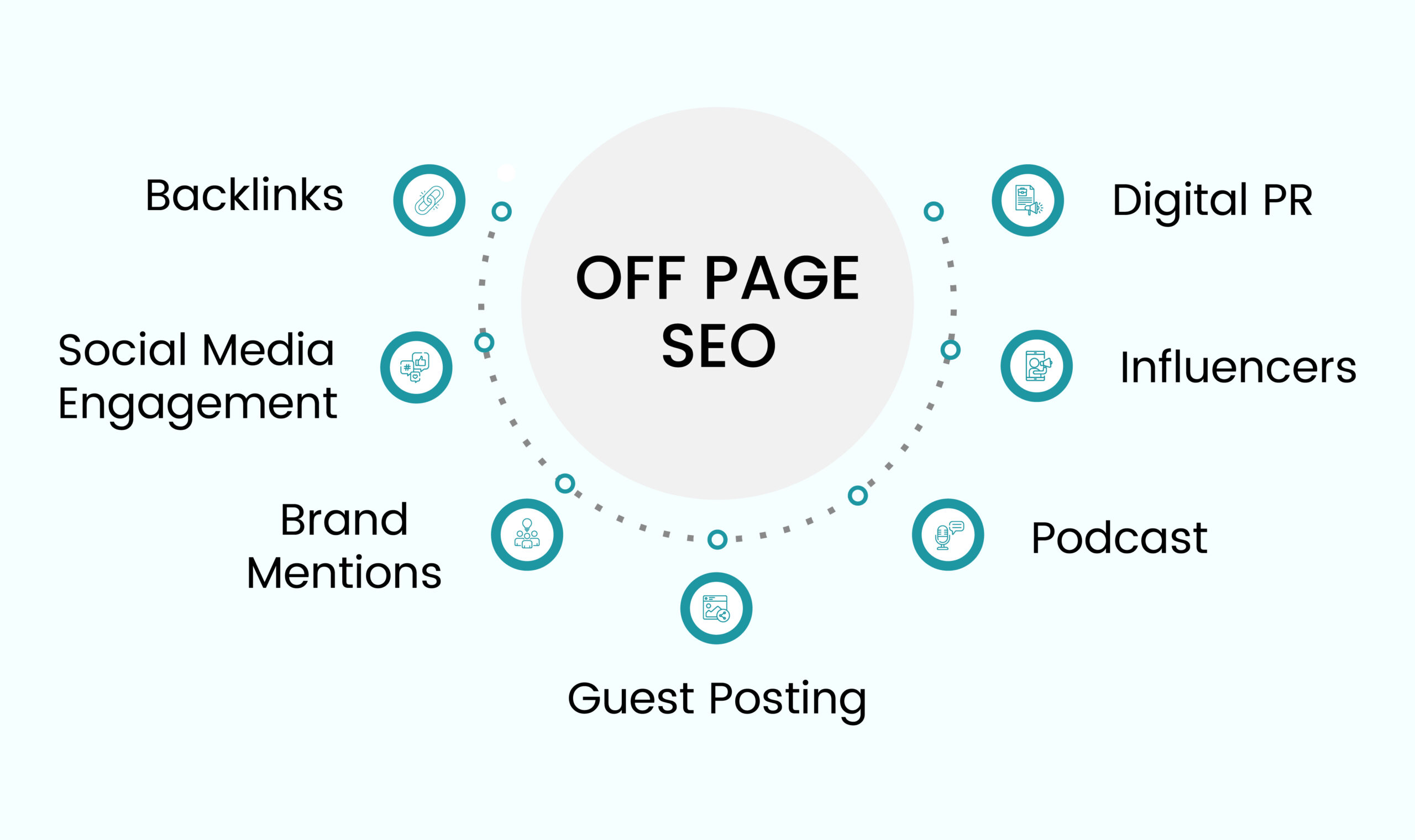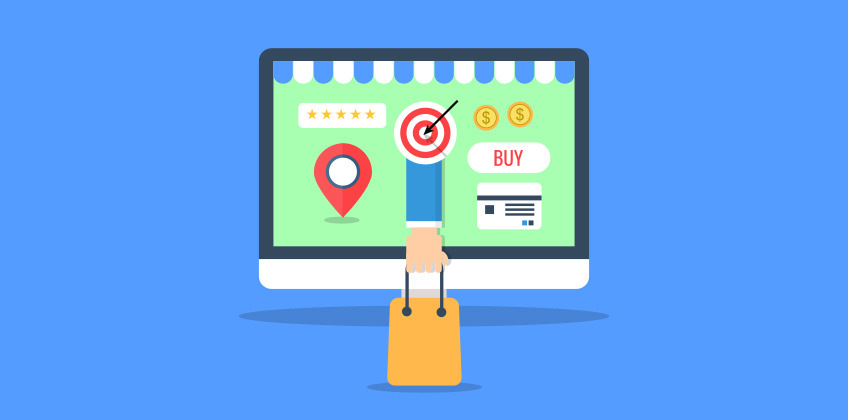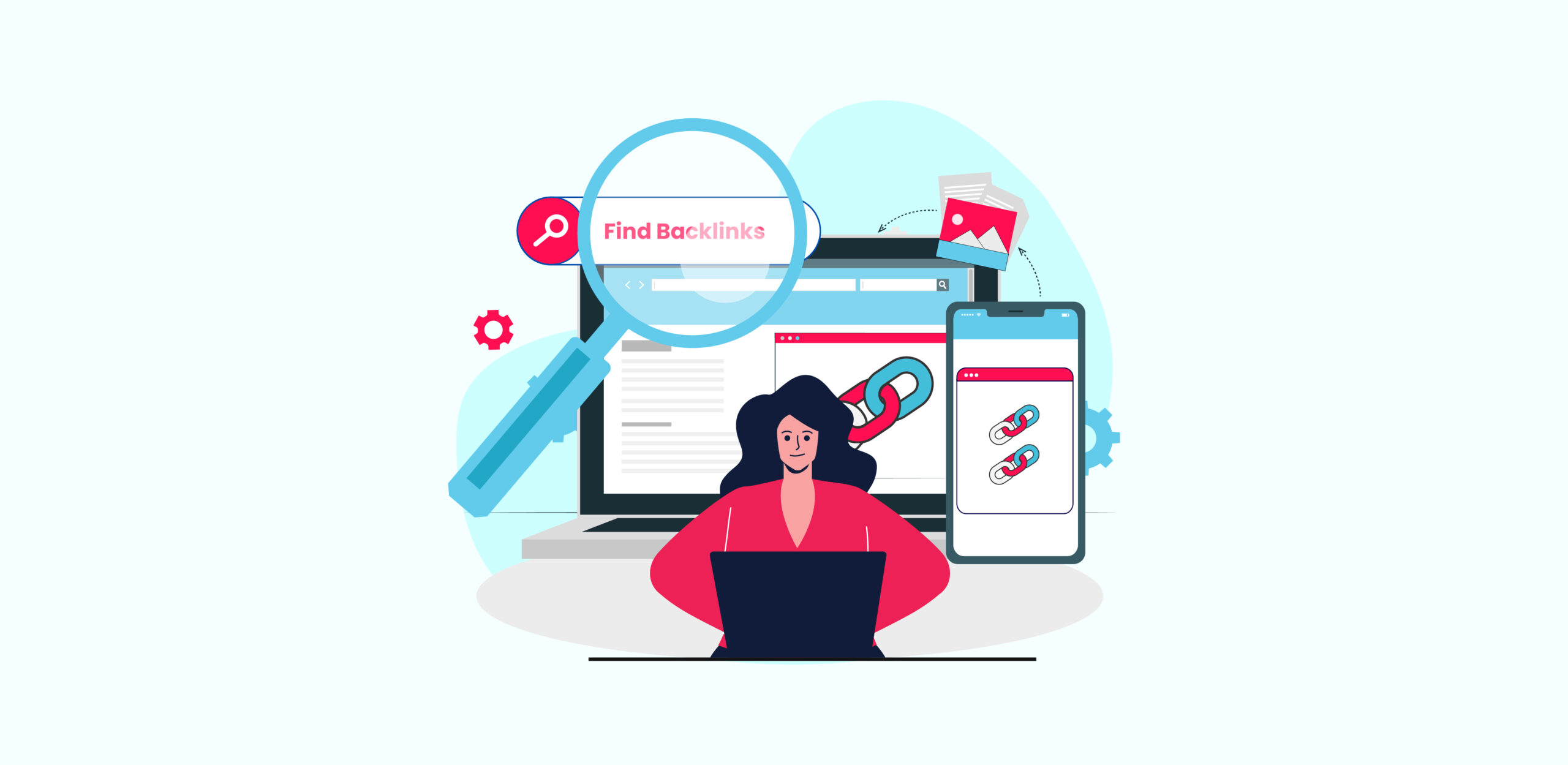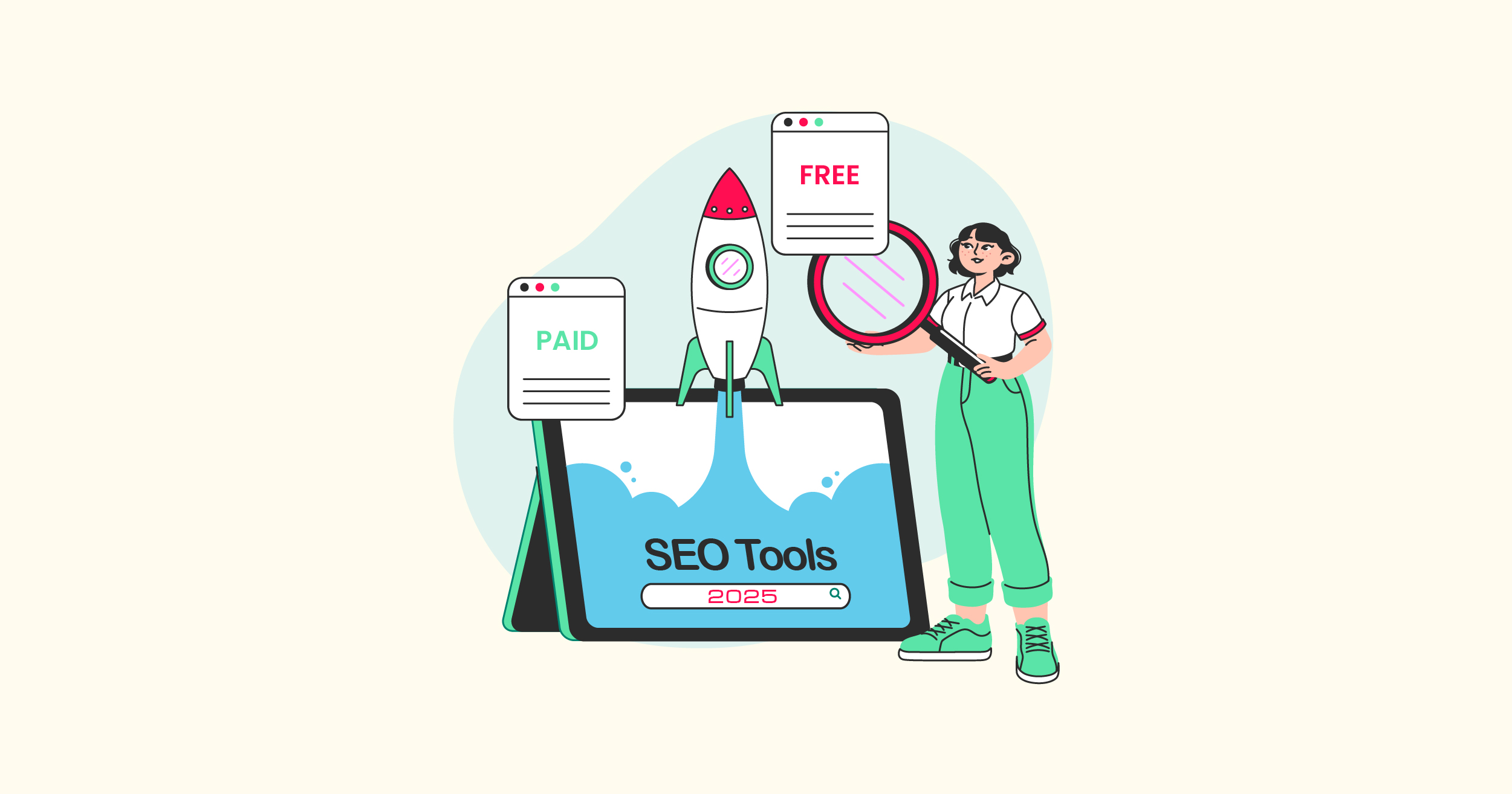If you are an SEO professional or a digital marketer, you may have faced this situation. You are working day and night on your off-page SEO tactics: meticulously planning your off-site SEO strategy and executing effective link outreach. Landing spots on popular guest posting sites is supposed to be a win, but instead, it feels like a gamble. One miscalculated move – a sketchy guest posting website or a poorly executed off site SEO strategy, and you’re staring down a Google penalty that tanks your rankings overnight.
The cold, harsh truth is that sometimes the line between a powerful off-page SEO technique and a penalty-inducing black hat trick can feel incredibly thin. Think about guest posting, for instance. Businesses use this classic off-page SEO tactic to earn contextual backlinks from reputable guest posting sites.
Here’s the rub: if you’re mass producing low-quality content stuffed with exact-match anchor text and publishing it on irrelevant blogs, the folks at Google may consider it a link scheme rather than white hat link building. And just like that in the blink of an eye, a dreaded Google penalty can wipe out all your hard work. And you’re trying to wrap your head around what went down.
The fear of getting slapped with a penalty for unnatural links can be overwhelming. It is like you’re in a state of flux. But what if there was a way to build authority and improve visibility without looking over your shoulder?
In this guide, we will show you how to deploy powerful, white hat link building strategies that give you a leg up on your competition without incurring a penalty. Learn how to execute a successful off-page SEO analysis and secure high-quality backlinks that build trust and drive traffic.
What is Off-Page SEO?
Off-page SEO refers to improving your site’s search engine rankings through various activities outside the website itself. Crucial off-page SEO elements include backlinks, digital PR, brand mentions, and social media engagement. Contrary to what some people believe, off-page SEO tactics go beyond merely link-building and focus on building reputation and trust.
However, remember that off-page SEO alone can’t help your website rank on SERPs. You’ll need a holistic approach – one that combines off-page SEO techniques with on-page SEO and technical SEO tactics to achieve success and growth.
Also, as SEO evolves and AI search engines pick up steam, it is imperative to focus on Google’s E-E-A-T guidelines.
Importance of Off-Page SEO
Off-page SEO improves your site’s visibility and credibility. Search engines tend to favor websites with a robust off-page SEO profile. They consider backlinks, online mentions, and social signals to assess the relevance and credibility of a website. While it’s still unclear what specific factors Google considers to rank websites, a research study conducted by Moz revealed something interesting – off-page SEO carries nearly 50% of the ranking factor weight.
Social signals and brand mentions indicate that your website provides relevant, valuable content, which in turn enhances your Google rankings. As the ranking of your site improves, its visibility boosts, and more people find it. This increase in visibility leads to more websites linking to your site, further boosting your website’s authority and ranking.
As you can see, this cycle is self-sustaining: the more quality backlinks you secure, the higher your website ranks on SERPs; the higher your website ranks, the more people find it and link to it.
Off-page SEO Techniques and Tactics that Don’t Incur Penalties
We’ve established that off-page SEO helps boost your website’s authority and ranking. Safe backlink building and other off-page tactics create a powerful, self-sustaining cycle of credibility and visibility. However, understanding why it’s crucial is only half the battle. The tricky part is enhancing your site’s authority without playing fast and loose with Google’s rulebook.
In this section, we will explain how you can build a powerful off-site SEO strategy that is both potent and sustainable. From ethical effective link outreach to securing high-quality contextual backlinks, we’ll explain how to work with the search engines, not against them, and finally put the dread of a penalty to rest.
White Hat Link Building
Search engines like Google and Bing use links as one of the key factors to determine the ranking of a site. Backlinks from authoritative, relevant websites are highly valued by search engines.
Besides boosting rankings, strategic link building also helps you develop genuine, long-term relationships with industry peers and content creators. As a rule of thumb, the more high-quality and relevant backlinks your site has, the more likely it is to rank higher. White hat link building is an effective and common off-page SEO tactics. However, you should avoid unnatural links designed to manipulate search rankings.
This is where a white label link building agency can help. A reputable agency will ensure your backlink strategy complies with Google’s link spam guidelines, helping you avoid penalties while building authority through ethical, high-quality links.
There are many strategies and tips you can use to boost the number of backlinks that point back to your website:
- Produce high-quality, relevant content that people will naturally want to link to.
- Assess your competitors’ backlinks and target similar sources.
- Spot broken links on other sites and politely recommend your page as a helpful alternative.
- Write guest blogs for other websites to score quality backlinks while introducing your brand to a new, relevant audience.
- List your website in relevant, top-quality resource pages or directories that can offer backlinks.
Digital PR
There was a time when SEO and PR were viewed as two separate aspects of marketing. Today, SEO and PR operate in tandem and reinforce each other’s impact. Digital public relations has emerged as a modern, highly effective link-building strategy that many SEO professionals swear by. Your business can use digital PR to promote linkable assets like research, expert roundups, interactive tools, and infographics to earn high-quality backlinks.
Building brand authority via well-thought-out PR campaigns develops lasting relationships with journalists and media outlets – a great way to boost your brand’s credibility and visibility across multiple platforms.
As digital PR secures links that are editorially vetted and earned through the merit of your content, it’s a white hat link building strategy that steers clear of the risks associated with manipulative penalties.
Let’s say you run an HVAC business in Boston that caters primarily to residential customers. You’ve recently published a comprehensive guide titled “10 Ways to Winter-Proof Your Home in New England.” This resource is brimming with local insights and expert tips on energy-saving, which makes it a perfect linkable asset.
Through an effective digital PR campaign, you put it on the radar of journalists, content creators, local news outlets, and community platforms that speak to your target audience. If only a few of them pick it up, reference your content, and link back to your website, you will earn contextual backlinks from high-authority domains. But there’s another benefit. When relevant and credible sites link to yours, this will position your HVAC brand as a trusted expert in home heating and energy efficiency.
As a result, your site will likely climb the SERPs and your brand gains visibility among a new audience. More importantly, you build relationships with publishers and news outlets who may feature your future content.
Online Reviews & Local SEO
Though local SEO falls under the larger SEO umbrella, it helps improve off-page SEO in two main ways. These are Google Business Profile (formerly Google My Business) and citations.
Google Business Profile
Want to get noticed by nearby customers without splurging on ads? GBP is one of the easiest and most effective ways to put your business on the map. With 46% of online searches having local intent, it shouldn’t come as a surprise that your top rivals are at an advantage if your site doesn’t appear in local GBP results. Sure, GBP isn’t your website, but that doesn’t mean you can ignore its significance in ranking for the local map pack.
When you create a GMB profile, the photographs and other information about your business, including location and services, are used across Google, boosting your discoverability to prospects in online search. As a hotel manager, you can display on-site amenities, star-class ratings, check-in and out times, and even a direct booking link to facilitate your potential customers.
There are numerous ways customers can interact with your Google Business Profile, and you can use your account to engage back with them. For example, you can answer questions and respond to reviews, showing your attentiveness and genuine desire to care. Here’s something that may come as a pleasant surprise. Google Business Profile can be used to publish posts to your Business Profile, just like you would with Instagram and other social platforms.
By using your Google Business Profile features—like posts, Q&A, and reviews—for genuine customer engagement and accurate information, you adhere to Google’s strict guidelines and effortlessly steer clear of the local SEO spam penalties that typically result from misinformation or manipulation.
The Power of Local Citations
Beyond backlinks and digital PR, local SEO relies on another crucial signal: citations. “Who even looks at Yellow Pages?” you may counter. While some people may perceive Yellow Pages as a legacy or traditional directory, they and other directories like Yelp remain a foundational element of off-page SEO tactics. So, what’s a citation? It is like tagging your business across the internet. Citations ensure that your business name, address, and phone number (aka NAP) show up on websites like Foursquare, Google Maps, Bing Places and other local directories.
The purpose of these mentions is to help search engines know your business is legit and where it’s located. It is akin to leaving breadcrumbs across the internet so Google and people, including your prospective customers, can find you without much effort. Consistency is essential to make sure your citation strategy works. A single oversight, like a street abbreviated differently (“St.” vs. “Street”) or an old phone number, can create confusion.
Let’s say you run an Italian restaurant in Atlanta, you wouldn’t want your customers showing up at the wrong address or calling a disconnected number. That seemingly tiny inconsistency could mean lost reservations and not-so-positive reviews. Ultimately, your restaurant’s local search visibility could plummet as a result. So, keeping your NAP details uniform across every listing is imperative to staying discoverable and credible.
Partnerships with Influencers
Collaborating with influencers and popular social media personalities is a great way to get seen, as long as you choose collaborators with the right audience. That means ensuring cultural relevance and a shared set of values and goals while keeping your target audience’s needs in mind.
If you run a Pilates studio and want to appeal to Gen Z and Gen A, it makes sense to team up with creators who embody wellness and authenticity. For instance, Instagrammers who post aesthetic studio shots or YouTubers who vlog their fitness and self-care journeys fit the bill. Few do this better than Gymshark, a UK-based activewear brand.
Gymshark’s collaboration with Whitney Simmons speaks volumes about influencer-brand alignment. Whitney isn’t a run-of-the-mill fitness influencer who focuses on endless product reviews. She’s a relatable, emotionally intelligent creator who shares her journey without holding back. Whitney’s vulnerability and forthrightness about her struggles with depression and psoriasis make this partnership feel deeply human and relatable. She narrated her experiences while sporting Gymshark apparel to connect with her audience, and her content feels conversational rather than performative.
Capitalizing on this, Gymshark co-created several collections with Whitney that reflect her soft and empowering personality. For a Pilates studio or fitness center targeting younger folks, this kind of partnership works well because Whitney’s story and style have more gravitas and sway than a flashy endorsement. When the influencer’s journey aligns with your mission, the impact goes far beyond visibility—it builds community, empathy, and lasting brand loyalty.
Engagement and natural backlinks via YouTube tutorials and social shares become natural byproducts of such partnerships. Links placed organically in reviews or product mentions perform well for SEO, while overly promotional or hidden links risk penalties. So, play it smart and keep your links natural.
Gen Z values relatability and transparency over airbrushed and curated content, so your primary candidate shouldn’t be someone with thousands of followers. Rather, it should be a fitness influencer whose lifestyle aligns with your brand and can create buzz that brings people through your doors. When the collaboration does not feel forced, their endorsement can pique interest, build trust, drive traffic, and spark genuine conversations that convert casual scrollers into loyal customers.
Influencer partnerships are especially effective in competitive markets like fashion, beauty, food & beverage, and tech, where visibility and trust are essential for standing out. The State of Influencer Marketing Report backs this. Fashion and Beauty is the most popular industry vertical for influencer marketing, and at least 21.6% use it as part of their strategy. Zara, Shein, and H&M are among the most mentioned fashion brands by influencers.
Identifying top influencers in your industry is a breeze with tools like BuzzSumo and Followerwonk. You can use these tools to search for influencers and social media personalities based on their audience size, topics/niche, the type of content they create, and engagement rates.
Social Media Engagement – Amplify Without Risk
Yes, we get it! Social media may not be a direct ranking factor in Google’s algorithm. However, there’s no denying its influence on off-page SEO. Platforms like Instagram and TikTok help turn up the volume on your message. Posting on social media puts your content in front of wider audiences and promotes natural backlink generation. It is an ideal way to build brand awareness and drive traffic.
Unlike manipulative link schemes and private blog networks, the organic nature of social media engagement means you’re building visibility without cutting corners or risking penalties. When users find your content appealing, it gets shared and linked to. This creates a ripple effect that search engines recognize as genuine authority. Use these tips to create content that moves the needle.
- Share Valuable Content: Promote blog posts, infographics, videos, and tools that offer real value. These are the assets most likely to earn backlinks.
- Engage Authentically: Respond to comments and join conversations to build and improve relationships with your audience. An upscale eatery can thank a guest for a positive review and even invite them back with a special offer. Engagement signals trust and credibility.
- Encourage User-Generated Content: The beauty of UGC is that someone else creates the content. The creator could be a customer or an advocate. This makes the content more authentic, and it carries more sway as word-of-mouth promotion. Reposts, reviews, and shoutouts from real users build social proof and often lead to natural backlinks.
Partnering with industry thought leaders and social influencers relevant to your industry or niche is a great way to gain access to their engaged audiences. Drive valuable referral traffic and naturally earned links without triggering search engine penalties.
Audio and Podcast SEO
Since Google’s 2019 announcement that it’d surface podcasts in the search engine results, podcasts are now widely recognized as a valuable component of a well-rounded SEO strategy. As expected, once that change rolled out, podcasts started popping up more often in search results. Now, just typing “podcast” into a search can lead users straight to episodes and shows they’re interested in.
In 2024, Spotify had 40 million podcast listeners in the United States and Apple Podcasts is not far behind with about 29 million listeners. No surprise, people are listening to podcasts to learn about things they find interesting and fascinating. According to Edison Research, learning new things and concepts was among the main reasons cited by American listeners for tuning in.
Now, think about it for a minute: an audience actively searching for in-depth, educational content is where your SEO efforts can really pay off. This presents a massive opportunity to diversify your strategy and capture their attention. When you optimize your podcast content, you’re reaching listeners on Spotify and Apple while creating unique off-page SEO elements that Google can index.
A unique way to think about a podcast with regard to how it’s valuable to your business is that most people would love to get featured on a podcast favorably.
Want your podcast to show up in search results? Start by turning your words into crawlable text. Transcribing each episode gives search engines something to crawl, helping you rank for those specific, often-overlooked queries your audience is typing in. Plus, it makes sense to create an engaging podcast episode on a given topic and integrate a promotional callout at strategic points in the episode
Also, distributing your podcast across various directories (syndication) is a powerful form of effective link outreach. It diversifies your off-site SEO strategy and authority across major platforms. You can also appear as a guest on relevant podcasts in order to reach niche audiences and scale your off-page SEO tactics efforts.
Podcasting is an effective way to connect with a new audience and make lasting connections with people who care about your subject. Essentially, audio content helps you tap into a distinct audience segment. You can package your expertise and insights in a highly consumable format, all while feeding Google a steady stream of fresh, keyword-rich content.
Final Thoughts
As it takes some time to develop relationships with other sites, and you aren’t in full control of the process and dynamics as you’d be with on-page SEO, off-page SEO tactics is usually challenging and time-consuming. However, it’s definitely worth the effort. Also, steering clear of Google penalties while carrying out SEO duties for your site isn’t as difficult as you may think.
You do have to be patient though. Before you start building links and chasing mentions, set the stage on-site so your off-site SEO can perform, including optimizing your website architecture and ensuring it’s easy to navigate. Stay consistent, keep pushing forward, and search engines will start surfacing your content.







